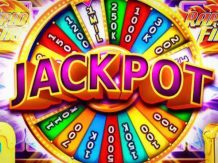Many traders use the Price Action methodology, but do it “on a hunch”. Since the technique is very variable, there is a certain advantage in it – the ability to develop your own style, but there is also a disadvantage – the lack of strict rules, gives the opportunity for self-sabotage and fundamentally incorrect trading on a seemingly profitable methodology. Today we will try to fix it. If you want to learn more about Forex trading, we also recommend you to study heiken ashi strategy finmax review.
Research Methodology
We will perform tests on periods H1, H4 and D1. We will take the testing period from 2000 to the present day. We will take the following currency pairs: USDCHF, GBPUSD, EURUSD, USDJPY, USDCAD, AUDUSD. These are the basic tools, the most popular. If we took all currency pairs for tests, our study would stretch for a month – only one pattern in the current set will have to conduct more than 500 tests.

We will perform the first test to study the predictive ability of the pattern. Here we will enter into and exit the deal after a strictly fixed time in candlesticks from the deal opening – 1, 2, 3, 4, 5, 6, 8, 10 and 12. We will compare the result with the result obtained by flipping a coin. In this case, we will compare the number of profitable deals, that is, in how many cases the forecast was justified. It does not matter how far the price has gone from the entry point. In this way, we will measure the predictive ability of the pattern itself regardless of the system of inputs, outputs, maneuvers and position management – net efficiency compared to completely random inputs at flipping a coin. We will call it a test of predictive efficiency.
The second test is to determine the best ratio of stops and takes without any additional filtering of inputs. Let’s call this test Risk/Reward. Each table of results for its own pair. The columns mean the ratio of stop to take profit, rows mean periods. In this case, we will take the number of bars in history to find the extremum to set the stop equal to 10.
The third test – entry by pattern with filtering by round level. That is, we will enter into transactions by the pattern only if it is based on the round level. In this case, we will also try to apply a different ratio of profit to risk. Test by levels. Each table of results for its own pair. The columns mean the ratio of stop to take profit, rows mean periods.

The next test is taking a trade by a pattern at a certain price location relative to the moving average with periods 50, 100, 200. In this case, we will also try to apply a different ratio of profit to risk. We will call it a trend test. We will also conduct a test using the position of moving averages in the opposite direction – we will allow selling when the price is above MA and buying when it is below. Let’s call this test reversal.
Further – the same test, only with filtering two moving averages with periods 14 and 21 to determine the direction of entry. If MA14 is higher than MA21, only purchases are possible. Again, we will also try to apply different profit/risk ratios.
The next test is to apply the same moving averages (50, 100 and 200) as a pattern support. Test by MA level (50, 100, 200). Each table of results for its own pair. The columns represent the ratio of stop to take profit, rows represent periods.
The last test is using oscillators: Stochastic, RSI, CCI, WPR. Test on oscillator (Stochastic, RSI, CCI, WPR). Each table of results for its pair. Columns represent the ratio of foot to take profit, rows represent periods.
More useful information can be found at MSU Finance.




